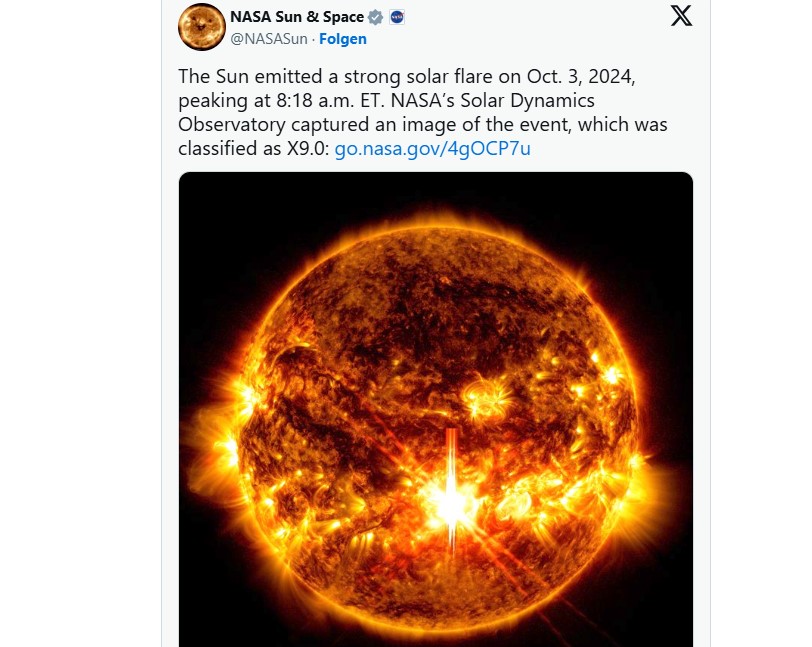On October 1 and 2, the second strongest eruption of the current 25th solar cycle to date was recorded. This was classified as X7.1 (R3 – strong) by the US space weather observers of NASA and NOAA. A solar storm warning has been issued due to the coronal mass ejection.
Radio interference possible
If the particles arrive on the side of the Earth facing the sun, there could be around one hour of radio interference, which could affect radio transmissions over a large area via shortwave. There is also the possibility that the northern lights will become visible in regions further south. However, there is no health risk for us humans on the ground.
On Thursday, US observers registered another strong eruption at 14:18 CEST, which was classified as X9.0 (R3 – Strong). Even though no serious incidents are forecast for this event, Melanie Heil from the ESA Space Weather Mission in Darmstadt warned of potentially far-reaching consequences: “It is possible that a very extreme solar storm could occur at any time.”
That means R
Günther Hasinger, ESA’s Science Director, explained in an earlier interview with Der Spiegel what could happen in the event of an extreme solar storm: “If the solar storm hits areas with sensitive infrastructure, it could paralyze power and mobile phone networks. When digital communication breaks down, hospitals and nuclear power plants have to fall back on emergency power generators.” In such a scenario, the consequences would be widespread blackouts, communication failures and the failure of numerous battery-powered devices.
The most intense solar flares fall into the X category, with the number after them indicating their strength and there is no upper limit; the largest eruption measured so far was an X45 that occurred on November 4, 2003. The added R indicates how strong possible radio blackouts are and ranges from R1 (minimal) to R5 (extreme) on a five-point scale.
source: oe24.at/picture: NASA Sun & Space (@NASASun) / X
This post has already been read 4177 times!



